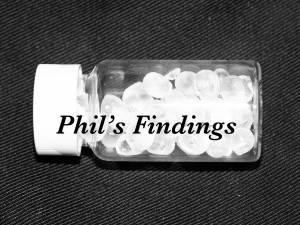Blog (August 2011)

22-8-11
Phil’s Finding’s #13: Plastic Fantastic
The first man made plastic was patented by Alexander Parkes in the UK in 1856. Since then, plastic has gone on to become a dominate force in our material world, being used in everything from spectacles to spaceships. They can be moulded, cast, blown, pressed or extruded into sheets, films fibers, tubes, bottles, and much more. More
19-8-11
Pyrometric Cones
These curious looking cones are new arrivals at the Materials Library. Once used as a method for measuring temperatures inside a furnace, each cone melts at different temperature - thus providing a visual indicator during the firing of ceramics. In this example, the cones - each fired at 1300C - began melting at 1200C, 1250C and 1300C (from right to left in the image). More

16-8-11
Phil’s Findings #12: Metallic Aesthetic
We are surrounded by metal. It forms the structures of our buildings, it’s used to make the vehicles that transport us around our world, and it’s at the root of all our hi-tech gadgets. Although metal is commonly used for its strength or high conductivity in mechanical and structural applications, it has a definite aesthetic appeal which stretches far beyond its purely functional side. More
10-8-11
We’ve got Gecko Tape
If you watched our Research Director, Mark Miodownik, give the 2011 Royal Institution Christmas Lectures, you might remember his explanation of why/how geckos manage to climb the walls as they do with thanks to the hair-like structures (spatulae tipped setae) on each of their toes. More
05-8-11
Concrete that heals itself
There’s a concrete that heals itself, which was developed by Dutch biologist Dr. Henk Jonkers from Delft University - and we’ve got a sample in the Materials Library. More

01-8-11
Phil’s Findings #11: Metal and Psychadelia
The world can look very different through the lens of a microscope, as this picture of a metal surface shows. We can see that what’s going on in the microstructure of the metal is a far cry from what we see with the naked eye. More